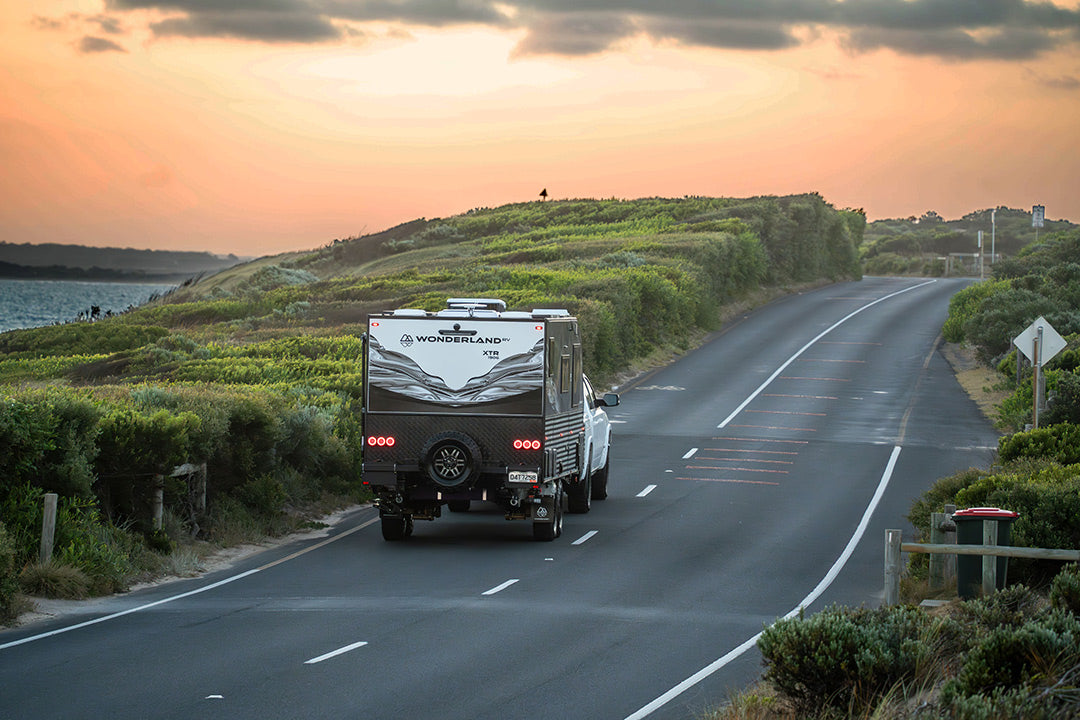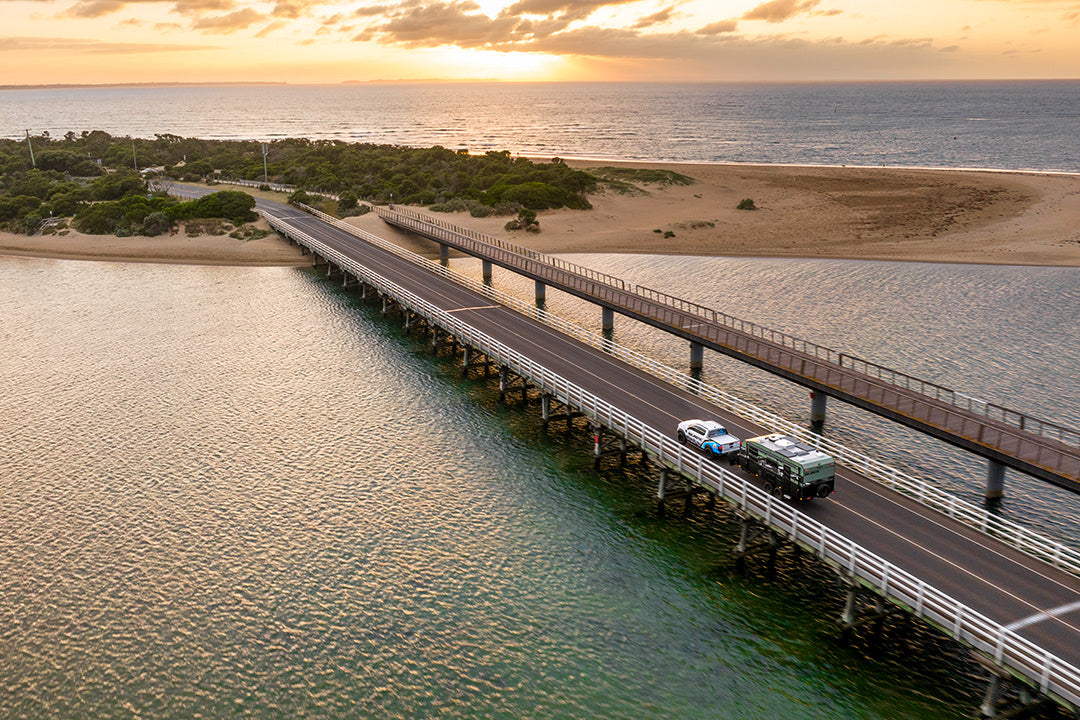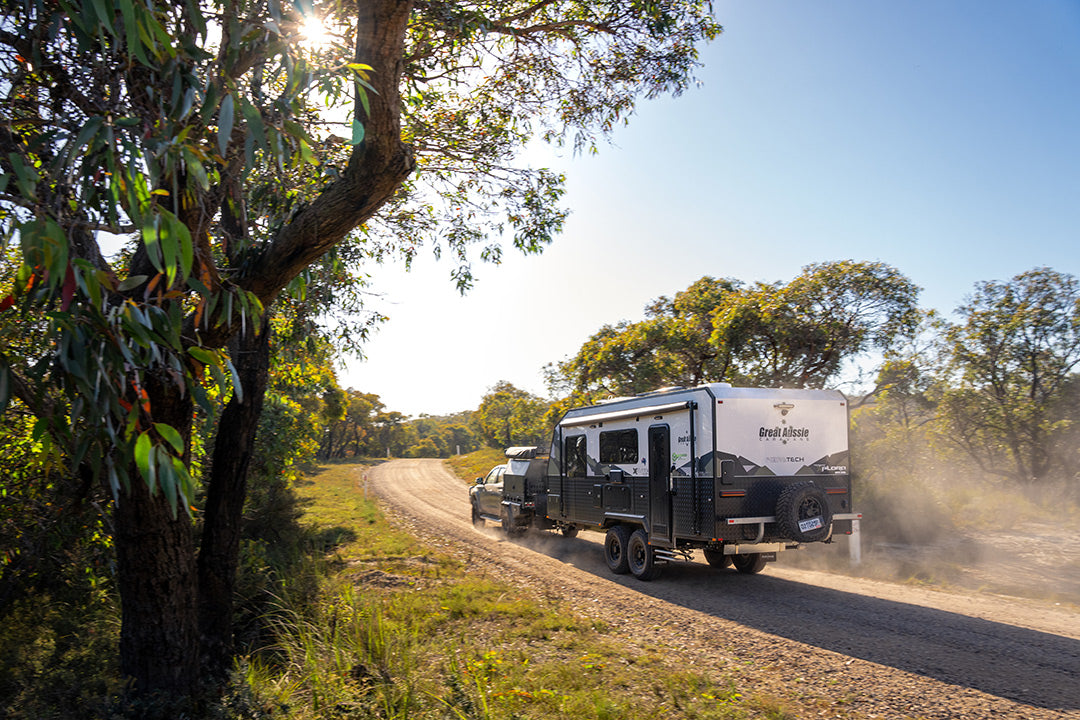Naturally Narrabri: Best things to see and do

And if you play your cards right you might even catch a glimpse of the elusive giant pink slug.
Stretching more than 1000km from the Murray River on the Victorian border to Goondiwindi just over the Queensland border, the Newell is the longest highway in New South Wales and is a popular inland route for southern travellers heading to warmer climes.
Among the fascinating country towns along this well-travelled route, in the heart of the Namoi Valley and Big Sky country, is Narrabri — the only place in the world to find an elusive giant pink slug and which featured in the song Tucker’s Daughter written in 1988 by Ian Moss.
It is also home to some beautiful natural wonders from the soaring summit of Mount Kaputar to the sulphur-smelling natural artesian bores of Pilliga.
We stopped in to explore the Narrabri region on our June trip up the Newell from Victoria to Queensland discovered some fascinating and quirky things to put on your travel bucket list.
Going potty
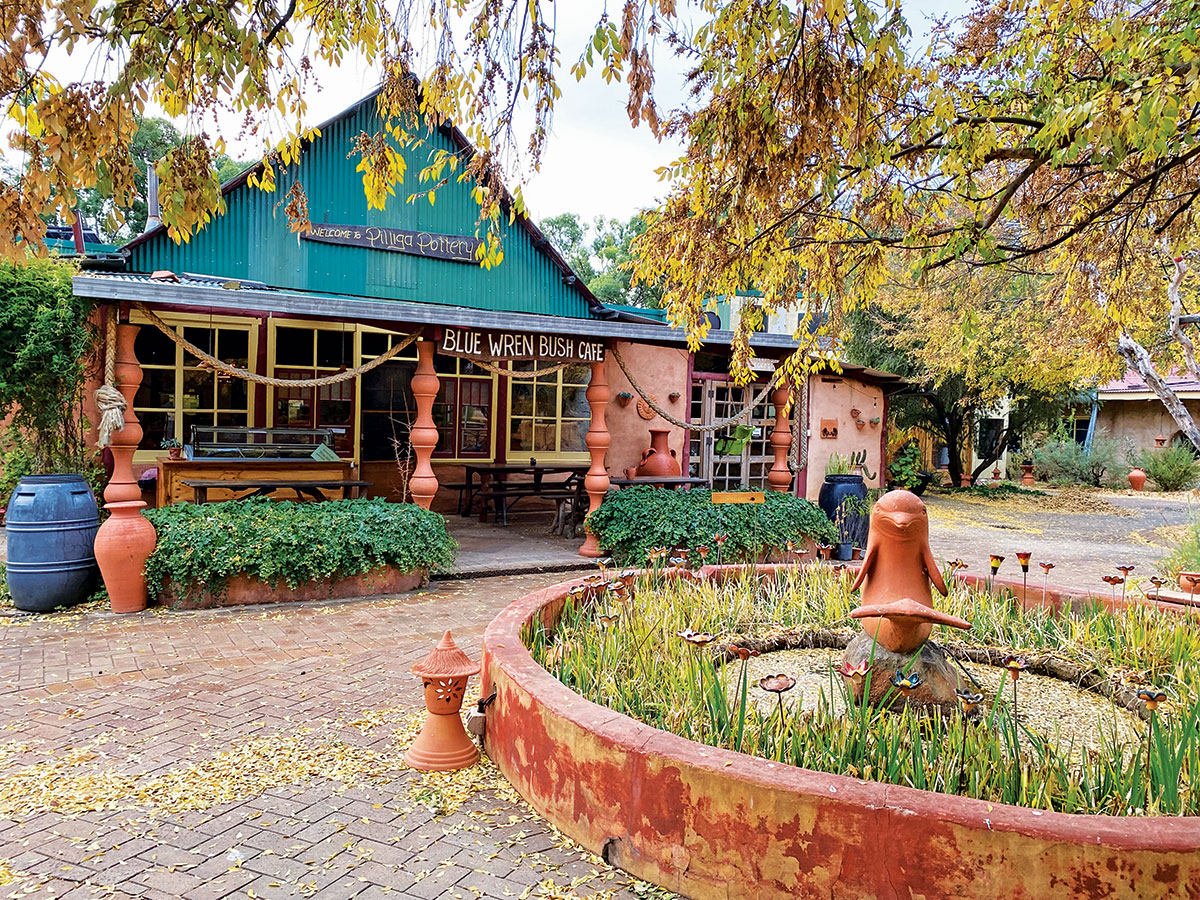
Our first stop in the Narrabri region was Pilliga Pottery and Barkala Farmstay about 23km north of Coonabarabran on the Newell, then about 10km from the highway on a dirt road.
Barkala Farm was originally bought and settled in 1986 by Maria and Richard Rickert, two German immigrants who hoped to create a new life and home in the Australian bush for their growing family. Today, nestled on the edge of the Pilliga Forest, it has been transformed into an eclectic destination featuring farmstay accommodation, camping, a huge pottery workshop and an onsite cafe.
Maria and Richard built all the unique buildings on their property, most of which are mudbrick and rammed earth, sourcing materials harvested from the farm, collected second-hand, crafted by friends, or created from scratch in the pottery studio.
Farmstay accommodation includes the Old Schoolhouse, the Studio, the Poet’s Cottage and the Farmhouse, as well as two campgrounds.
Both family and pet-friendly, it's a great place to enjoy activities such as birdwatching, bushwalking and animal feeding. There’s also a swimming pool, creek and volleyball court. It’s a great base from which to enjoy some of the attractions of the Pilliga State Forest including Sandstone Caves, Sculptures in the Scrub and Salt Caves.
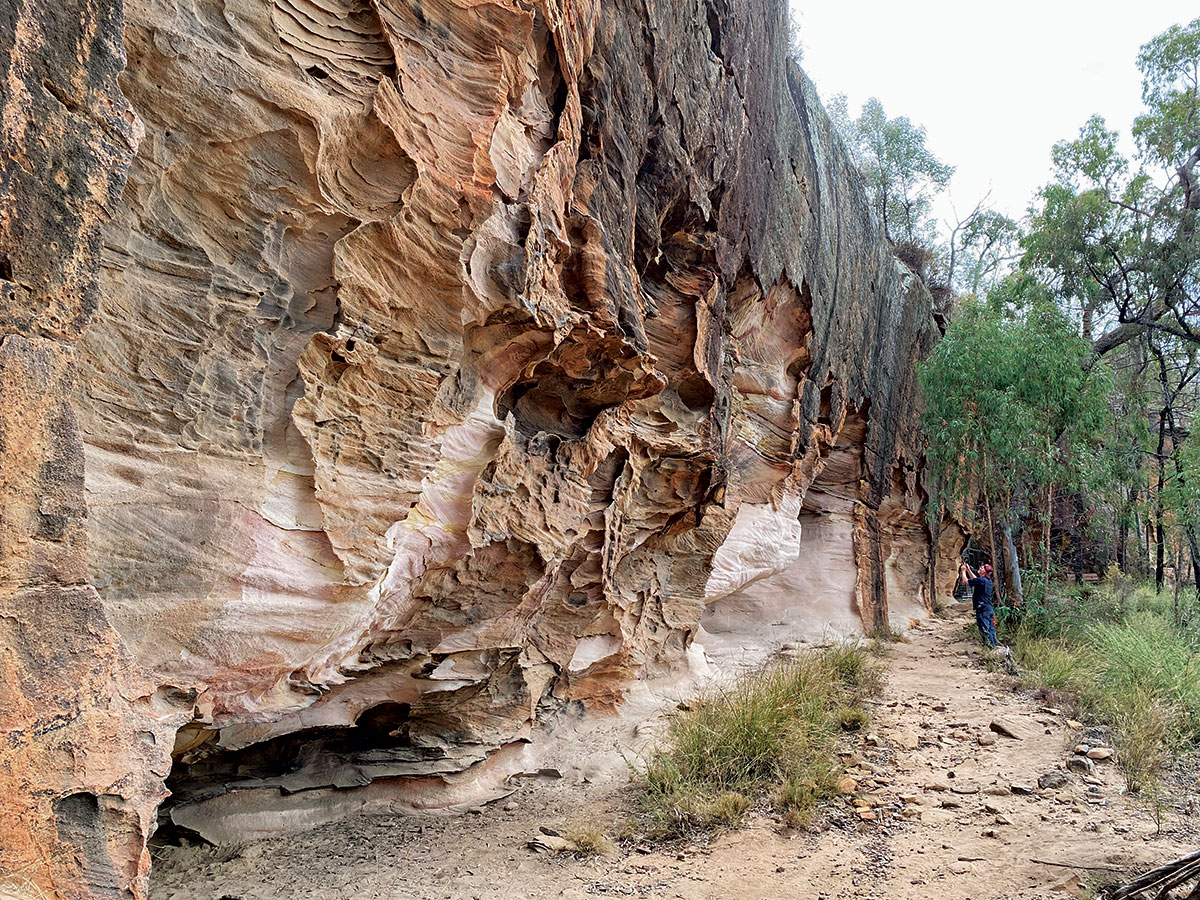
Pilliga Pottery is 100 per cent off-grid with its own water supply and solar system. There is no phone reception, mail service, food deliveries or rubbish removal. The property is completely self-sufficient, and visitors are asked to respect their mission for sustainable living and a greener future for all. That includes keeping showers, which are fed by rainwater tanks, to a minimum.
We camped in the Goanna Campground, which is closest to the cafe and pottery studio. There is a toilet block with composting loos within the camp, and it is just a few minutes’ walk to the main toilet and shower building. This ground is slightly sloped, with some flat spots and shady trees.
If you like your privacy, Kellie’s Campground is a little further away from the action offering a wide variety of camping sites ranging from creek-side camping, bush or open paddock sites. There is a new toilet and shower block here as well as dishwashing facilities as well.
Camping is $25 per night for two people, toilets and showers are available, fires and dogs allowed. There’s no power or water.
The pottery studio and gallery is fascinating and heaving with all manner of unique pottery pieces made from their own clay and available for purchase. The Blue Wren is a theme featured on a lot of the beautiful pieces and is the name of the cafe serving breakfast, lunch and dinner six days a week (closed Wednesday) including pizza and German-inspired meals, such as sausages and schnitzel.
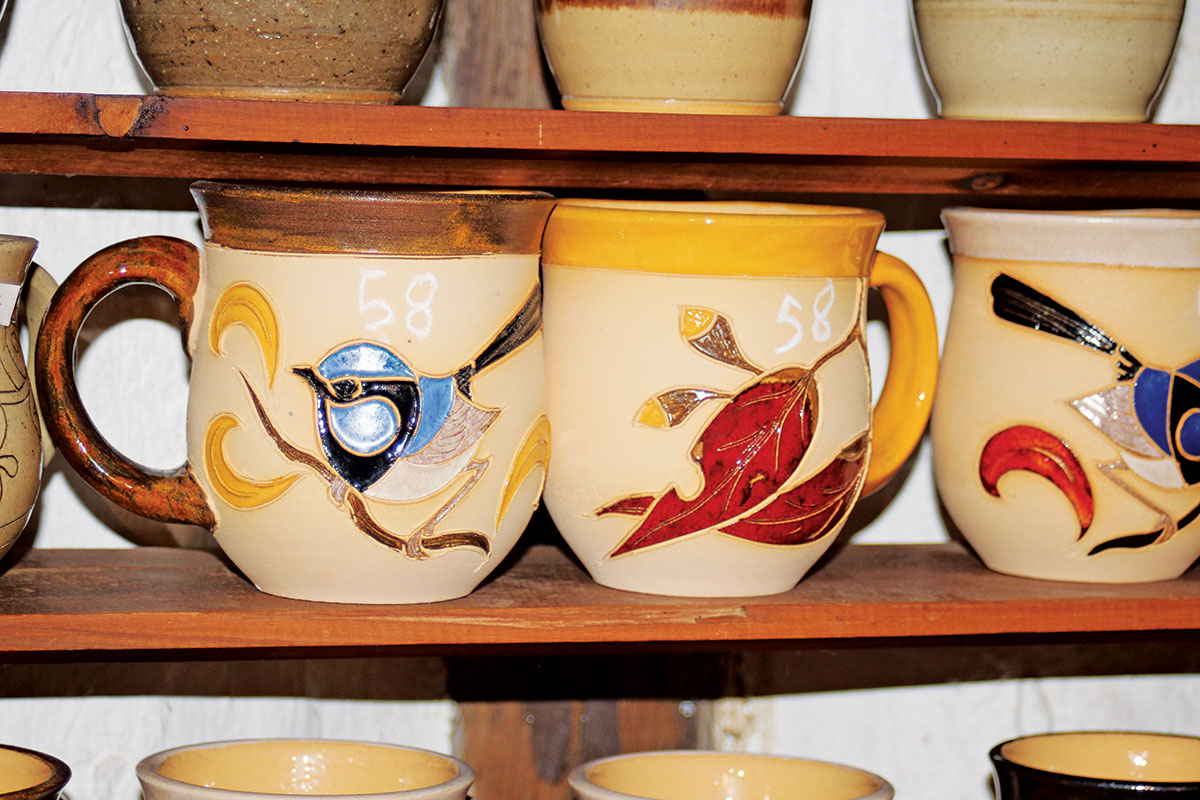
After setting up camp and familiarising ourselves with our beautiful surrounds, we head off to the nearby Sandstone Caves in Pilliga Forest. This location is not signposted from the Newell Highway at the request of the local indigenous people and is one of the only areas of the forest that is open to the public. The 1.7km loop is graded medium and follows in the footsteps of the Gamilaroi (Kamilaroi) people. The track passes through scenic forest to the impressive sandstone hills, with some containing ancient Aboriginal rock engravings.
You can take a self-guided tour — there’s lots of interpretive signage.
Another attraction in the Pilliga Forest we didn’t get to is the Sculptures in the Scrub, a project four years in the making. Each sculpture is the result of an artist collaborating with local Aboriginal Elders and young people on a piece that tells a story of Aboriginal history and culture.
There are picnic tables and a camping area nearby.
Once back at camp, we ordered takeaway chicken schnitzels from the Blue Wren Cafe and we took them back to the van for dinner. They were served on beautiful pottery plates, with sides of homemade chips and salad — just delicious.
Take the Pilliga plunge
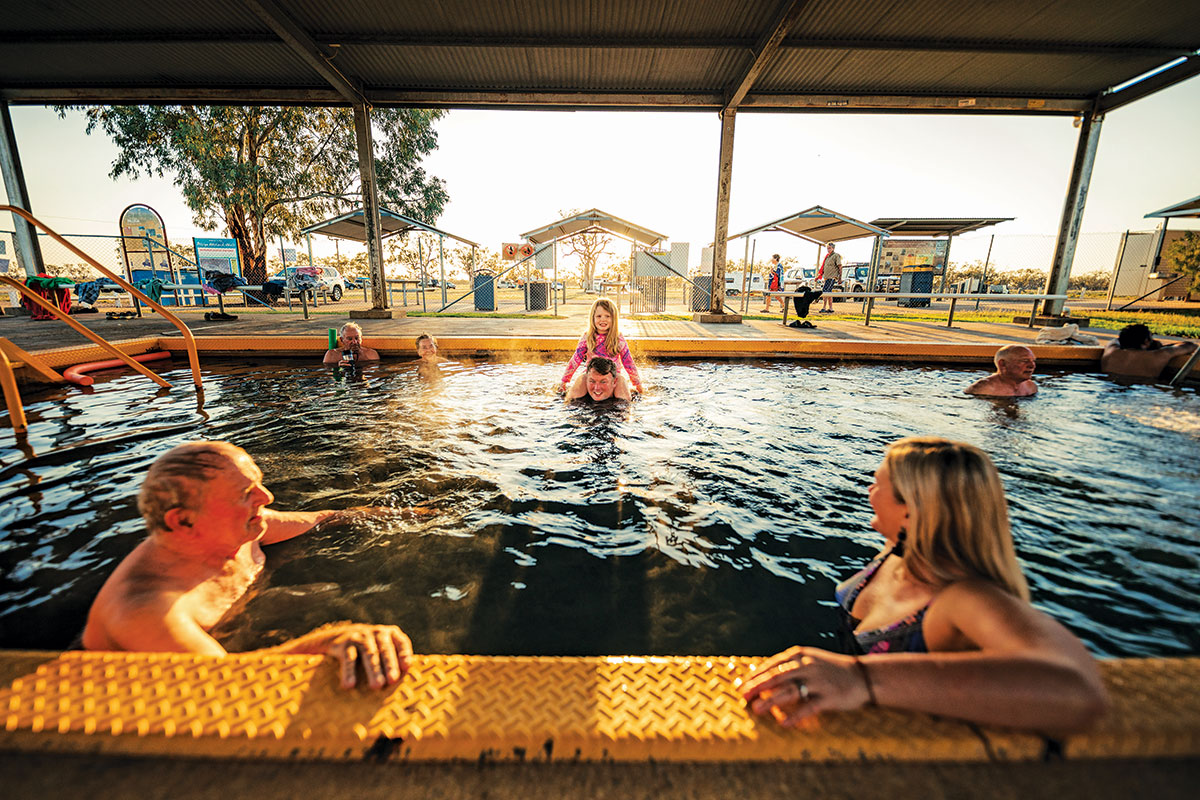
After a very restful night camped at Pilliga Pottery, our next destination was the township of Pilliga about 130km away — a windy but pretty easy drive via the Coonabarabran Road through the town of Baradine and then the unmade Cypress Way.
The Pilliga Artesian Bore Campground, owned by the Narrabri Council, is a large dirt area just off the main road to Wee Waa.
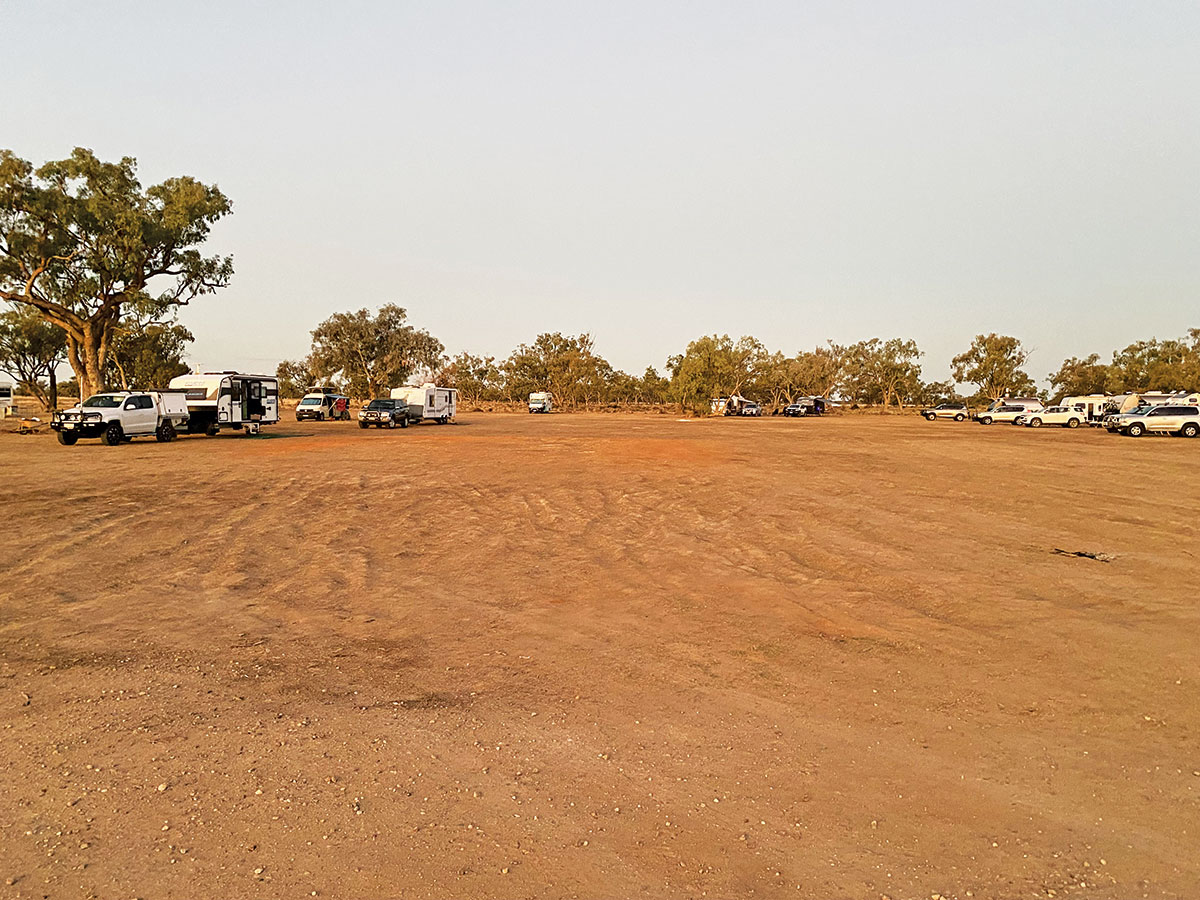
Constructed in 1902 as a permanent town water supply after severe drought, the Pilliga Artesian Bore Baths has become a popular tourist destination for travellers and is also popular with locals. The current pool was constructed in 1980 and has had several improvements over the years. The Pilliga Baths is part of the Great Artesian Drive which comprises seven distinct and unique hot artesian spa facilities across north-west NSW, including Moree.
The therapeutic value of this mineral water which is a constant 37 degrees has long been recognised for those who like to soak away their aches and pains. It is covered by a shade sail roof for protection from the elements and is lit at night.
The soothing waters are popular with grey nomads and the modest-sized pool was full of them when we took a dip. It reminded me of the 1985 movie Cocoon where aliens charge the water in the swimming pool in a retirement village, making swimmers feel younger and stronger. I half expected to emerge from the soothing Pilliga waters looking 20 years younger but alas not.
Camping is $5 per night with a maximum stay of 21 days. There is no power or water. There is a shower and flushing toilets and a couple of barbecues. The campground is 3km from the Pilliga township where there is food and retail outlets, including a cafe and a pub.
Cotton capital
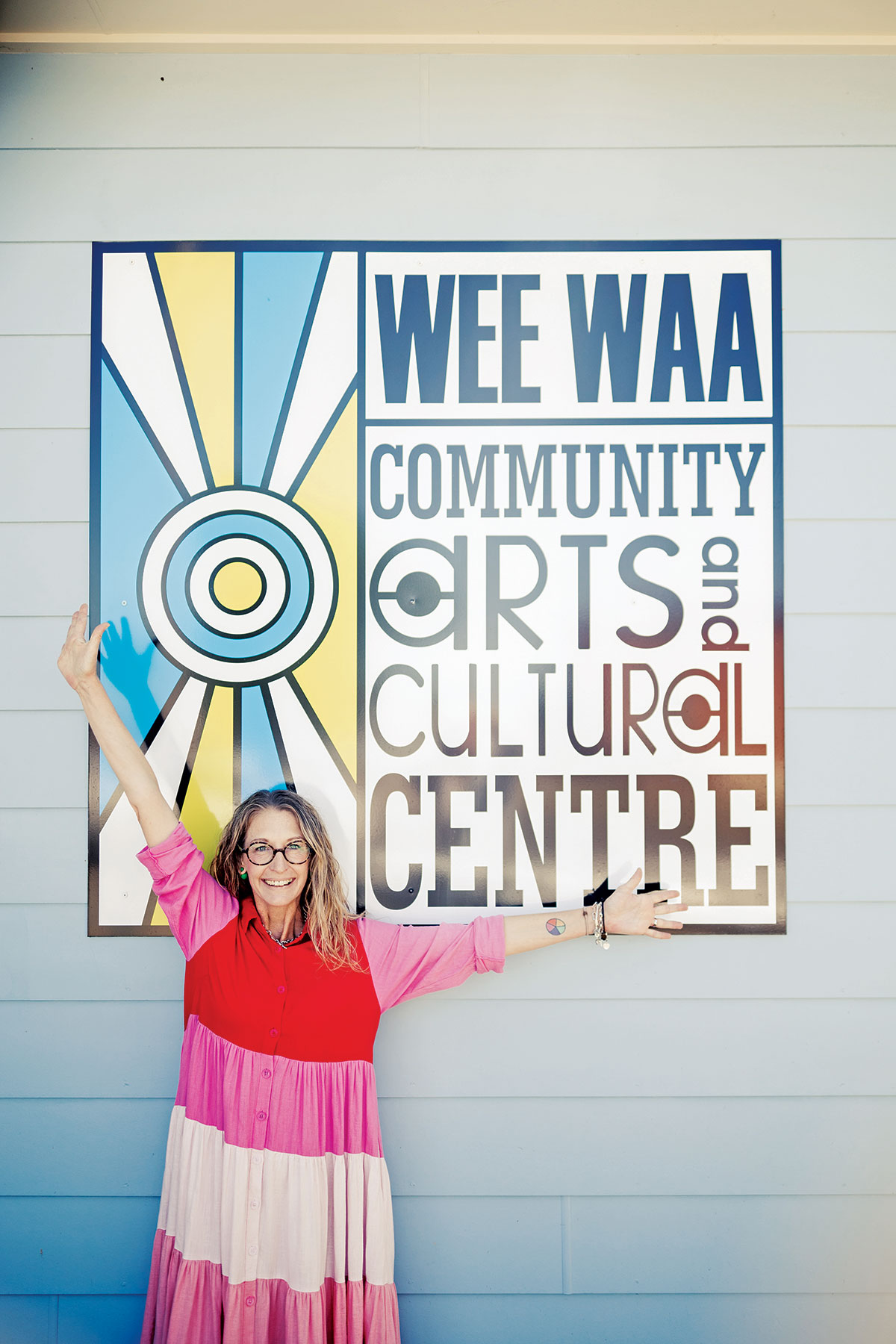
Just 50km west of Pilliga is the township of Wee Waa (pronounced wee war), the cotton capital of Australia. There are 55,000 hectares of cotton growing in the region, producing 470,000 bales annually at a value of $235 million. The fibre from one 227kg cotton bale can produce 215 pairs of jeans, 250 single bed sheets, 1200 T-shirts, 4300 pairs of socks or 680,000 cotton balls.
Our first stop was the Wee Waa Community Arts and Cultural Centre which fosters local artistic and cultural development and provides an independent space for the local community to learn and share artistic and cultural skills and knowledge.
Curator Lisa AlMagro made us very welcome and explained how the centre holds workshops and classes for local artists and provides gallery space. Some of the indigenous art had gone to Narrabri for another event so she was disappointed that she didn’t have full walls to show us. We did see some lovely art though.
From Wee Waa, we drove out to Yarrie Lake about 20km from Narrabri. This 3km saucer-shaped expanse of water is said to have been formed by a meteor which fell thousands of years ago.
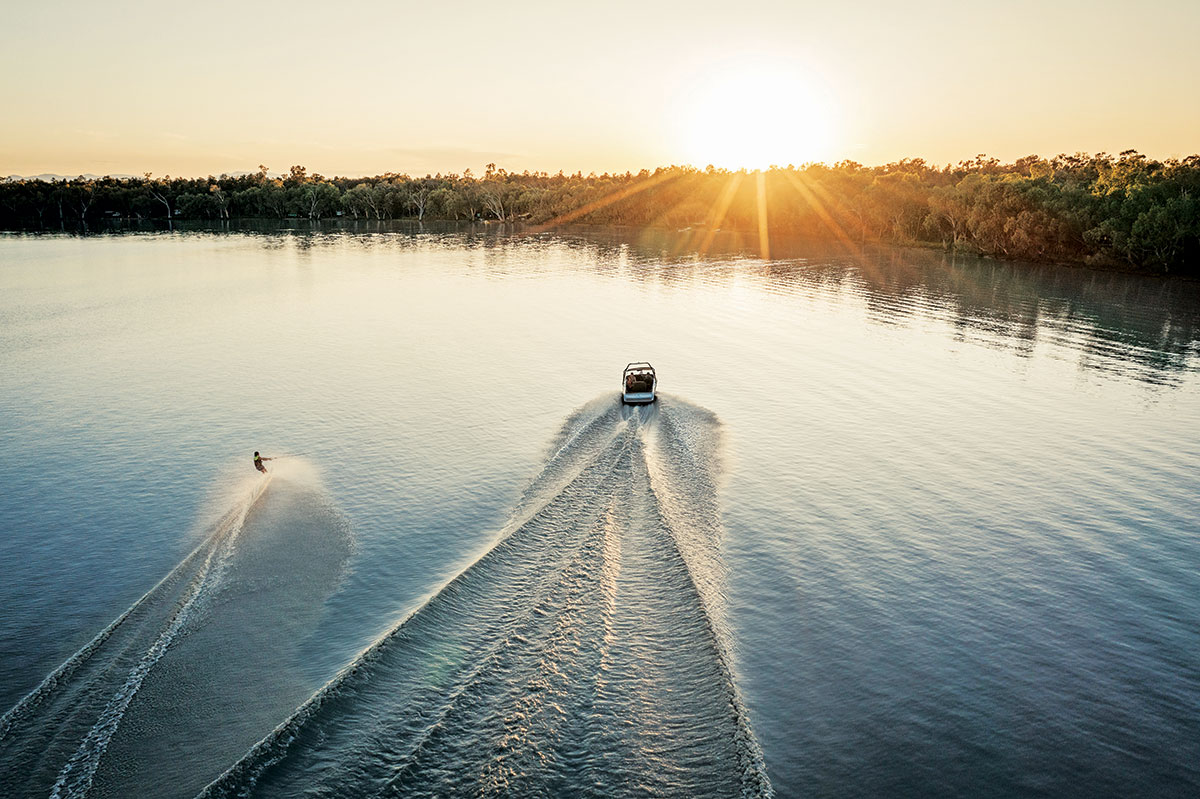
Yarrie Lake is a popular camping destination, and its sheltered location makes it an excellent bird breeding ground. There are more than 70 species to be seen so twitters will love it. There are powered sites, toilets and hot showers, laundry, picnic shelters and barbecues and it is renowned for its stunning sunsets so photographers as well as those who love water sports or a spot of yabbying will appreciate this beautiful bush camp.
Just a few kilometres down the road from Yarrie Lake is the CSIRO Australia Telescope Compact Array. If you’ve visited the Dish outside Parkes, multiply it by six. This is the Dish on steroids — six 22m wide dish antennas which all work together to simulate a much larger antenna, allowing astronomers to observe very fine detail. Five of the 270 tonne dishes are located along a 3km rail track, while the sixth is located about 5km to the west.
The Telescope Information Centre on site has lots of information about how it all works, and you can check out the computers for live, up-to-date details about what is being tracked.
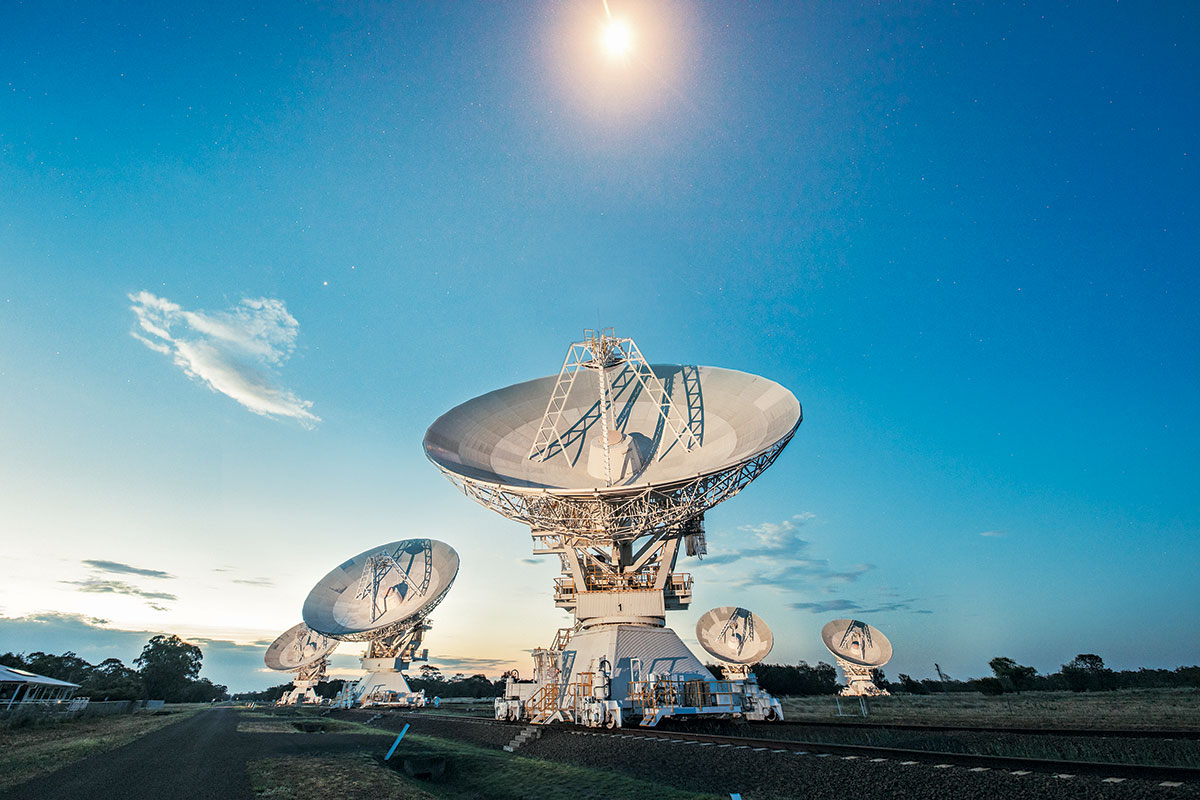
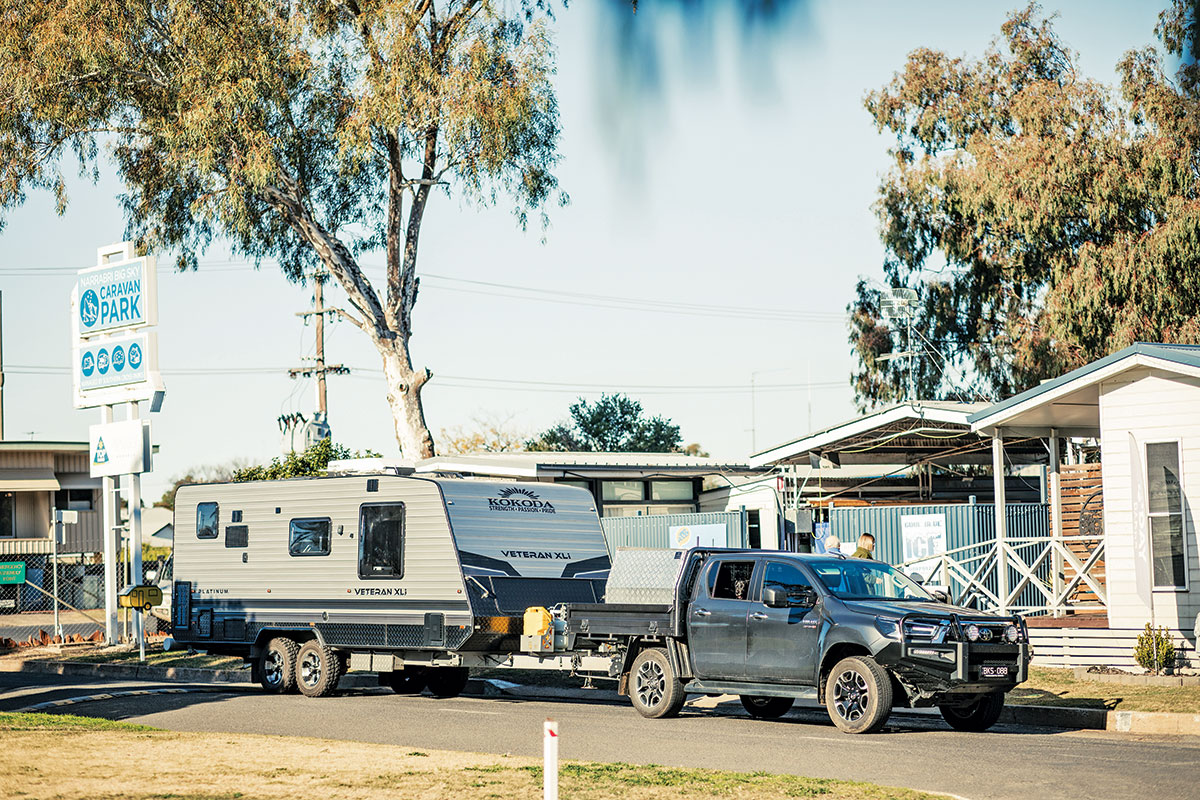
From the telescopes, it is a very short drive into the bustling town of Narrabri where we checked into the Narrabri Big Sky Caravan Park for a couple of nights. Managed by Tanya and Peter Insch, the Big Sky is conveniently located within walking distance of the bustling town centre with shops, hotels and restaurants, The Crossing Theatre, Visitor Information Centre and tourism precinct and with cycling and walking paths along the Namoi River at its back gate. It is a small park, catering to travellers passing through and stopping for a few days to explore all the region has to offer.
Slug hunting
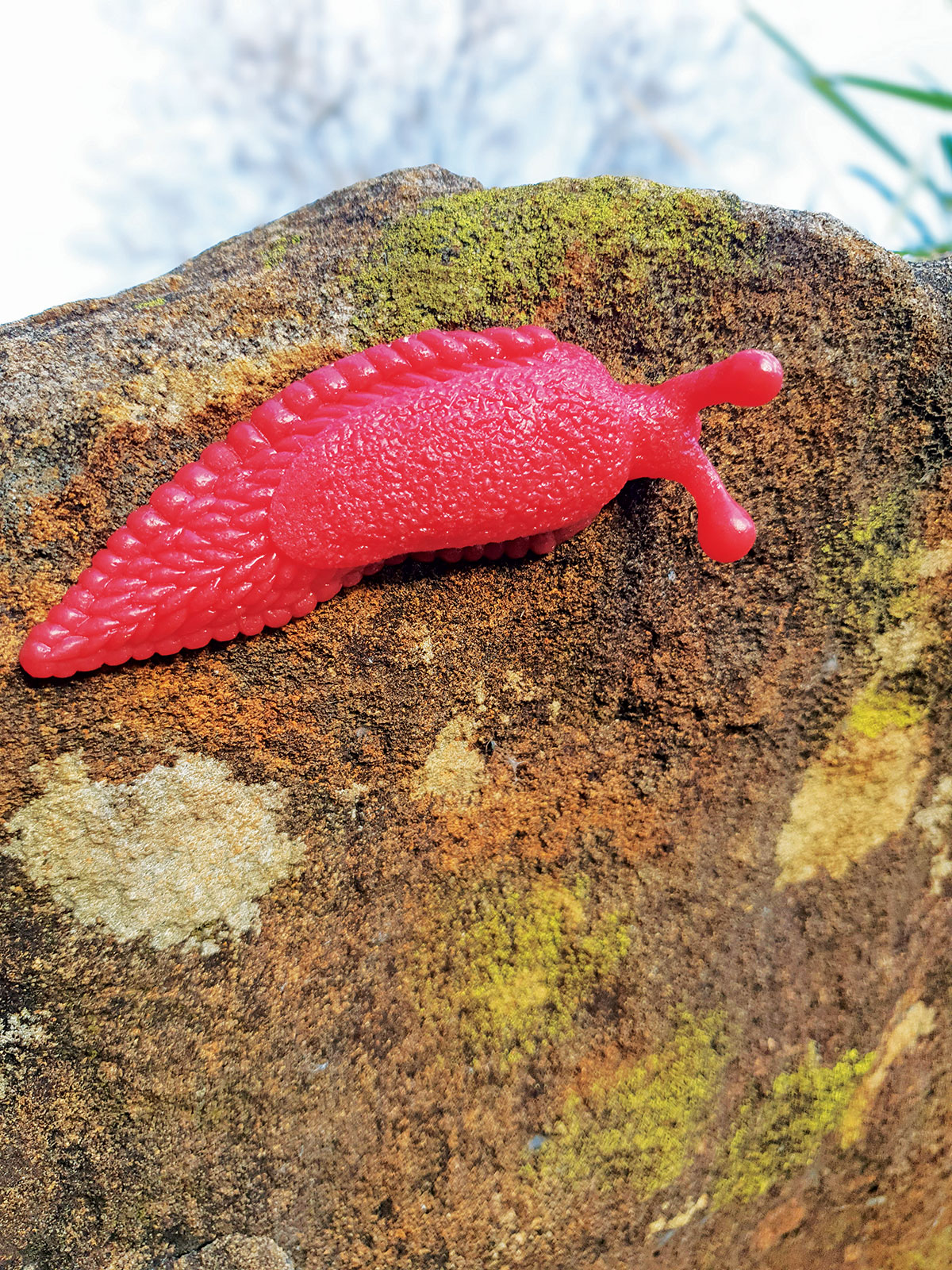 (A toy version of th elusive Kaputar Giant Pink Slug)
(A toy version of th elusive Kaputar Giant Pink Slug)
I first heard about the Kaputar Giant Pink Slug (Triboniophorus sp. nov. ‘Kaputar’) from Tanya at the Big Sky. She has a plastic one on the counter and gave me the low down on these elusive bright, slimy creatures that only come out in wet conditions on the mountain. This morning was overcast with a promise of rain, so I was excited to set out on a slug-hunting adventure.
This iconic species in the snail community is bright pink in colour with a white sole and optic tentacles. The slug grows up to 20cm in length and is found nowhere else in the world than on top of the extinct volcano that is Mount Kaputar, about 50km east of Narrabri. They only come out when it is raining or shortly thereafter while it’s still misty and damp. They emerge from their shelter in cracks in the rocks and deep in logs and trees to feed on algae, lichen and fungi growing on the rocks and the trunks of smooth-barked eucalyptus trees.
They are a threatened species and were impacted by the 2019–2020 bushfires. Members of the public can help the NSW government track their numbers by downloading the Slug Sleuth app and reporting sightings to help scientists determine where the slug is found, its habitat preferences and whether it’s being affected by climate change over time.
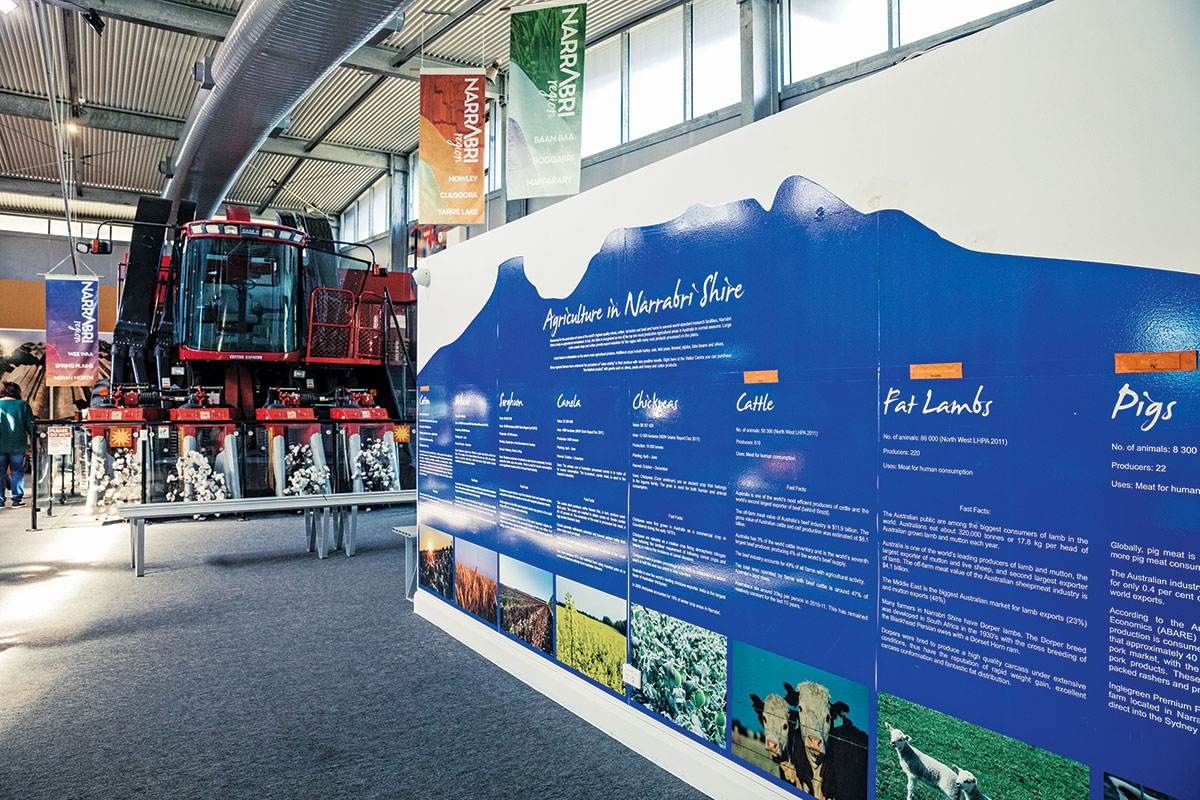
First, we popped into the Narrabri Visitor Information Centre to meet with the very helpful and friendly staff about some of the attractions in the region. It’s a massive building — large enough to house a real-life cotton-picking machine which visitors can climb into and ‘operate’. You can learn about Gamilaroi (Kamilaroi) history, about local farming practices and wander around a large array of regional produce and souvenirs. You can also buy some toy pink slugs in case you don’t get to see the real thing in the wild.
About an hour's drive from Narrabri, Mount Kaputar (pronounced cap-you-tar) rises spectacularly 1512m from the surrounding flat agricultural plains thanks to a series of volcanic eruptions between 17 and 21 million years ago. From the summit lookout, on a clear day, you can apparently see a staggering 10 per cent of New South Wales. Unfortunately for us, it was too cloudy to take in any of those spectacular views and too dry for the giant pink slugs to make an appearance. Maybe next time.
If you have time to explore the magnificent Mount Kaputar National Park, there are two camping areas with hot showers and electric barbecues, as well as three well-equipped cabins at Dawson’s Spring which can be booked through the National Parks and Wildlife Service. There's a range of walking tracks to suit all tastes and abilities from rambling strolls to strenuous climbs. Sawn Rocks, a mighty wall of 40m high organ pipe formations, is located in the northern section of the National Park. The Waa Gorge walking track is a continuation of the Mill-bullah walking track, and offers a more challenging route through the Grattai Wilderness and into the colourful Waa Gorge. Twitchers will love the birdwatching opportunities and there's a great spot to enjoy a picnic. Spring is the best time of year to see a riot of wildflowers along the unformed track.
That's the spirit
By the time we reached the bottom of the mountain, it was raining heavily, so we called into the Black Snake Distillery on the road back to town to speak to Stephen Beale about the fascinating process of making Mezcal-type spirits from agave plants, which he and his wife Rosemary have been doing for about seven years.
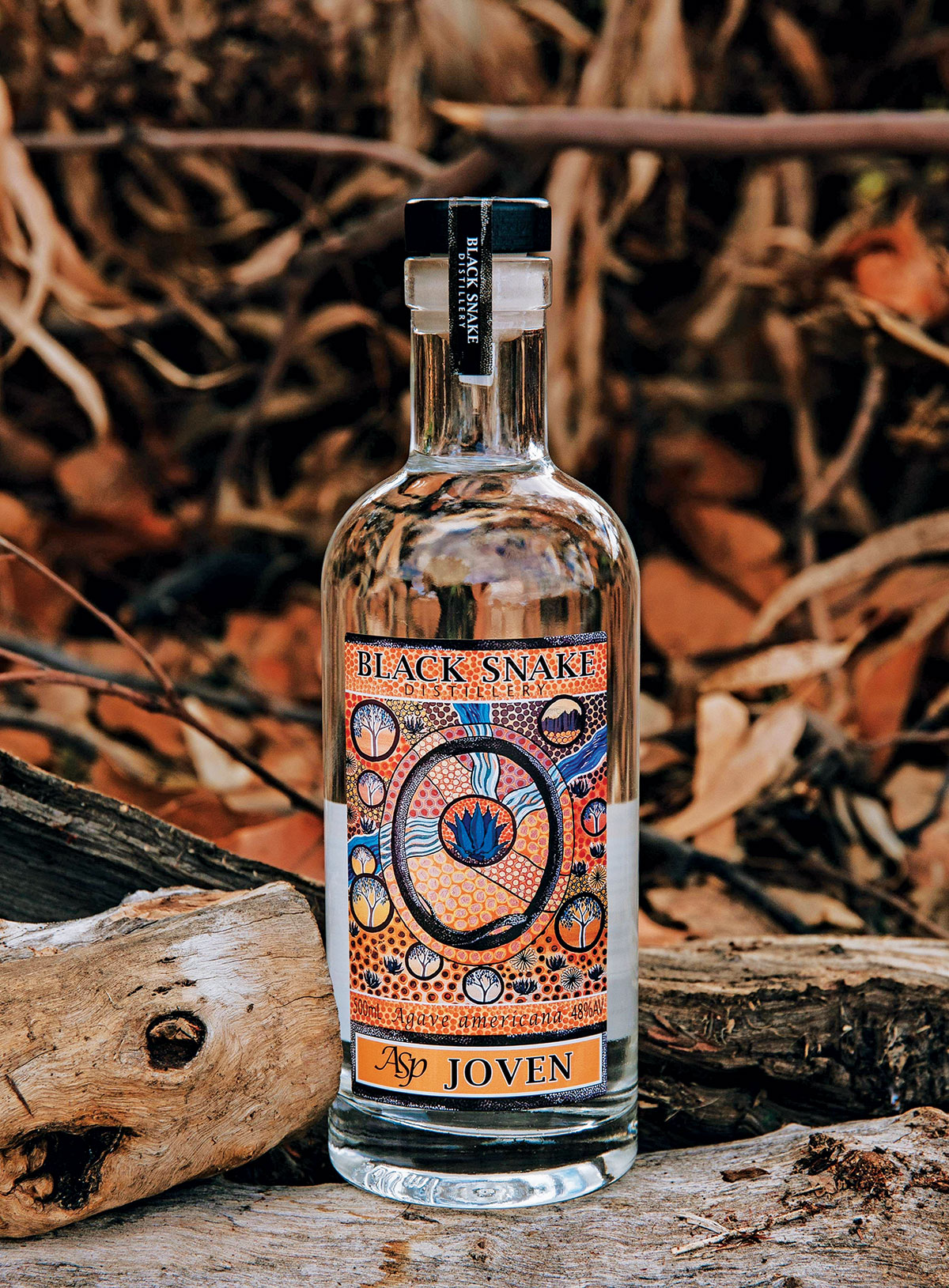
The seed for the distillery was planted in 2016 when one of the Beales’ daughters returned from a trip to Mexico keen to share her experience regarding Mezcal. She thought that their home climate just out of Narrabri was suitable for the growth of agave and the production of spirits from those plants.
Agave Americana, one of the 40 or so species used in Mexico to produce Mezcal, had probably been imported to Australia for use as a decorative plant but had escaped in the last 100 years or so. Stephen had this species of agave growing wild on his property.
And so, their journey to establish a sustainable craft distillery began. The guiding principles were to have a minimal environmental impact while producing a quality product. Stephen modified a 200L stainless steel food grade drum (with some help from a local engineering firm) to provide the basis of the still, which is powered by second-hand solar panels.
After testing and tinkering for some time, Black Snake Distillery produced pure gin, followed by the handcrafted agave spirit as was originally intended. This is known as ASp and has been made using Mexican production as a guide. ASp is now available in Joven, Reposado and Pechuga lines. These spirits are in the vicinity of 48 per cent proof, so a couple of tastings certainly warmed us up after our cold visit to the top of the mountain. Black Snake Distillery is open most days but it’s best to ring ahead to make sure Stephen will be around.
That night we chose to have dinner at the beautiful art deco Tourist Hotel on Maitland Street in the centre of town. Beautifully restored, the Tourist Hotel combines 1930s glamour with modern luxuries and provides a range of accommodation options, all within easy reach of shops, supermarkets, cinema and more.
Narrabri’s own Steve Irwin
Narrabri has some fascinating history and a terrific network of walking and cycling paths and the self-guided historical walk of the Narrabri Creek is a great way to exercise both body and brain at the same time. The 4km route, which I started at the Big Sky Caravan Park, meanders through Narrabri’s Sporting Mile and shady parklands, taking in 15 locations of interest. They include a plaque to mark Major Thomas Mitchell’s expedition to the region in 1832, the cricket sight boards which originally graced the hallowed Sydney Cricket Ground and the Sporting Wall of Fame, erected after a Channel 9 competition in 2001 to find the sportiest town in Australia. The names on the wall excelled at their sport at a state, national and world level across more than 30 sporting codes.
We bid farewell to Tanya at the Big Sky and drove about 10km out of town for our 10:30am tour at the Narrabri Fish Farm. We had been told that owner Ricko Cunningham was the local version of Steve Irwin — a larger-than-life character — and it was an apt description.
Narrabri Fish Farm is the largest hatchery-based aquaculture farm in NSW breeding golden perch, Murray cod, eel-tailed catfish, silver perch and yabbies. Ricko sells them as fingerlings to be released into river systems and farm dams. Yabbies are also sold to aquariums as feeders.
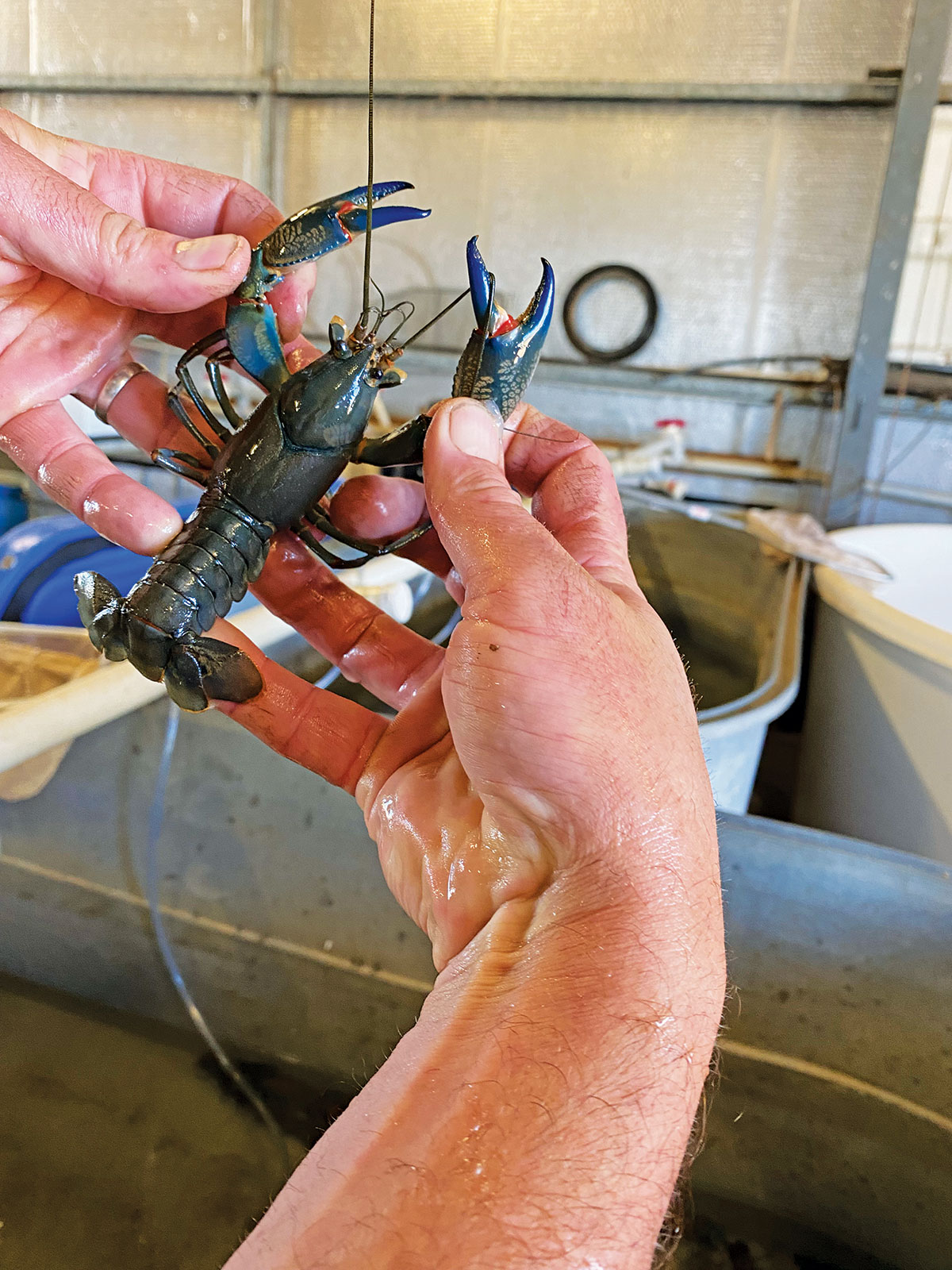
Just prior to our visit, Ricko had released 10,000 native catfish fingerlings into the Darling River system at Deniliquin, in conjunction with the Department of Primary Industries. It was the first such release of catfish into a river system anywhere in the world.
The farm is 250 acres and contains 100 dams and a four-metre sculpture of a Murray cod made out of recycled materials. As well as guided tours, fish feeding, yabbying and fishing, Ricko offers camping for self-sufficient campers. There are eight powered caravan sites, two cabins, an amenities block and a rustic barbecue and picnic area. Ricko has planned to upgrade the camping facilities and provide regular cook-ups and activities such as yabby races and casting competitions for campers. If you’re lucky, he might play the didgeridoo for you.
When you visit Narrabri pop into the Visitor Information Centre and speak to the very helpful staff about these and the many other things to do in the Narrabri region. There’s a host of events on throughout the year including agricultural shows, music musters, campdrafts, races, polocrosse and festivals.
The author and partner were guests of Narrabri Shire Council.
Contact information
Black Snake Distillery
642 Kaputar Road
Narrabri NSW 2390
P: 0499 611 600
E: contact@blacksnake.com.au
Narrabri Big Sky Caravan Park
11–35 Tibbereena Street
Narrabri NSW 2390
P: 02 6792 1294
E: narrabri@southerncrossparks.com.au
Narrabri Fish Farm
261 Tuppiari Road
Narrabri 2390 NSW
P: 0428 749 606
Narrabri Region Visitor Information Centre
103 Tibbereena Street (Newell Highway)
Narrabri NSW 2390
P: 02 6799 6760 or freecall 1800 659 931
E: tourism@narrabri.nsw.gov.au
Pilliga Artesian Bore Baths
Pilliga Road
Pilliga NSW 2388
P: 02 6799 6760 or 1800 659 931
E: tourism@narrabri.nsw.gov.au
Pilliga Pottery and Barkala Farmstay
2630 Dandry Road
Coonabarabran NSW 2357
P: 02 6842 2239
E: pilligapottery@gmail.com
Wee Waa Arts and Cultural Centre
22 George Street
Wee Waa NSW 2388
P: 0408 965 990
E: weewaaartsandculturalcentre@gmail.com
Open Wednesday, Thursday and Saturday 10am–4pm
Yarrie Lake
Yarrie Lake Road
Narrabri NSW 2390
P: 0427 666 105
THE NEXT STEP
Are you ready to experience the freedom of the open road? Don't wait - Find your dream getaway now!
RELATED ARTICLES:
The jewell off the Newell: Inverell, New South Wales




